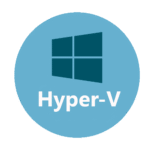Nagwin (Nagios for Windows): Enterprise Monitoring, Minus the Linux Hassle
Finally, Nagios Love on Windows
If you’ve ever pined for Nagios’ rock-solid monitoring but recoiled at setting up a Linux box just to run it, Nagwin is your answer. It bundles Nagios, NSClient++, plugins and a light Apache server into a Windows-friendly package—no missing dependencies, no battling with SELinux. You get Nagios’s alerting, graphing and extensibility right on your Windows servers.
What’s Going on Under the Hood
- All-In-One Installer: Nagwin drops in Nagios Core, NSClient++, PHP, Perl and Apache as Windows services—everything just works out of the box.
• NRPE & NSClient++: Execute Nagios plugins on Windows via NSClient++, collecting CPU, memory, disk, Event Log checks or even custom PowerShell scripts.
• Web UI: A built-in Apache/PHP front end delivers the classic Nagios dashboard with host/group views, service status and historical logs.
The Bits You’ll Actually Use
| You Want To… | Nagwin Does This… |
| Install in Minutes | MSI-based setup wizard—accept defaults, reboot, and you’re monitoring. |
| Monitor Windows Metrics | CPU load, RAM usage, disk free, Event Log entries and more with NSClient++. |
| Run Custom Scripts | Point NRPE at any PowerShell or batch file—get its exit code and output. |
| Alert via Email/SMS | Define contacts and commands in Nagios—get notified when checks fail. |
| Unified Web Portal | Same Nagios interface hosting Windows and Linux hosts side by side. |
| Plugin Extensibility | Drop `.exe` or `.pl` files into the plugins folder—Nagwin picks them up. |
| Auto-Start Services | Nagios and Apache run as Windows services—always on after reboot. |
| Agentless Checks | Use WMI or SNMP checks against other Windows or network devices without installing agents. |
Quickstart in Four Clicks
- Run the MSI: Download Nagwin installer, double-click, accept defaults—Nagios, NSClient++ and Apache install as services.
- Configure Hosts: Edit C:\Nagios\etc\hosts.cfg, add your Windows server with check_command like check_nt!CPULOAD!-w 80 -c 90.
- Restart Services: Restart Nagios and Apache in Services or reboot—your Windows node appears under Hosts.
- View & Alert: Browse to http://localhost/nagios, log in, view status, and tweak thresholds as needed.
Pro Tips from the Field
– Secure the Web UI: Change default credentials in htpasswd.users and restrict Apache to local or VPN-only access.
– Tune Checks: Adjust warning and critical thresholds based on baseline measurements for CPU, memory and disk.
– Optimize WMI: Use native plugin checks over WMI when possible to reduce overhead.
– Use Templates: Define host and service templates in templates.cfg to streamline new host additions.
– Monitor the Agent: Set a Nagios check on NSClient++ service to alert if it stops unexpectedly.
Parting Thought
Nagwin marries the power of Nagios with Windows ease of use, eliminating the need for a separate Linux VM. With quick setup, native Windows checks and a familiar web UI, it brings enterprise-grade monitoring to your Windows servers—minus the usual headaches.







